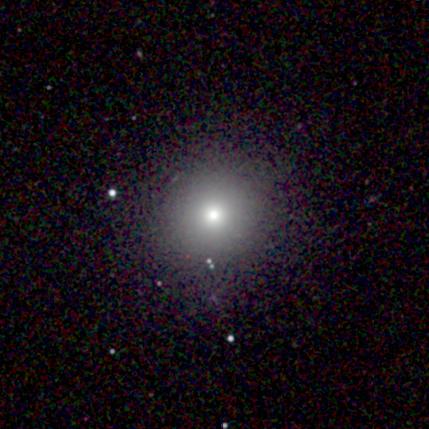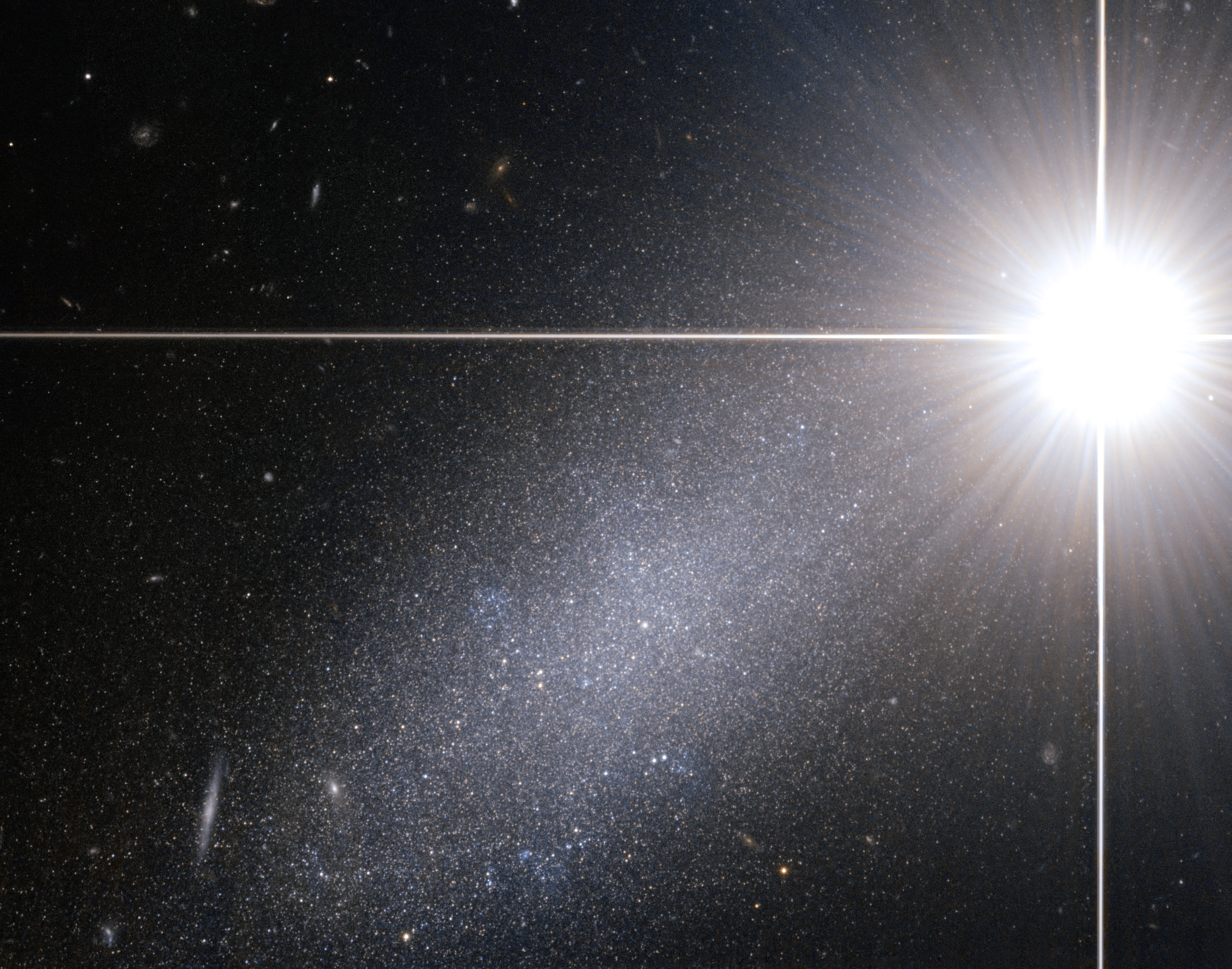Overdensities
Estimate the overdensity Δ for
- the Earth
- the globular cluster 47 Tuc
- M31 (Andromeda)
- the Virgo cluster of galaxies
What volume of the universe would each object correspond to now?
i.e., what is the radius of a sphere with equal mass but density equal to the cosmic mean?
(Since the universe began with uniform density, this tells you how big a chunk of the current
universe was scooped up to form each object).
[Hint: what is the appropriate mean density to compare to for each object?]
You will need to refer to scholarly resources to obtain the necessary data.
The first hit on a google search rarely qualifies. NED
is a useful resource.
It helps to think first about what data you need.
Milky Way baryons
Suppose the rotation curve of the Milky Way stays flat at 220 km/s out to the "edge" of the dark matter halo at 180 kpc.
- What is the dynamical mass of the Milky Way within this edge?
- What is the detected baryon fraction of the Milky Way?
The tally of known stars and gas is approximately 5 x 1010 M☉. - If the cosmic baryon fraction fb = Ωb/Ωm = 0.15, what mass of baryons is missing?
- Speculate on the current location & state of the missing baryons.
i.e., where are they now? what form are they in?
Elliptical galaxies: big & bright; small & dim

M89 is a giant elliptical galaxy with luminosity L = 1011 L☉, effective radius Re = 500 pc, and velocity dispersion σ = 252 km/s.
- What is the mass-to-light ratio of M89?
- Does this system require dark matter?
Draco is a dwarf Spheroidal satellite of the Milky Way. It has luminosity
L = 2 x 105 L☉,
effective radius Re = 220 pc,
and velocity dispersion σ = 10 km/s.

- What is the mass-to-light ratio of Draco?
- Does this system require dark matter?
You may assume isotropy; i.e., the usual virial theorem applies.
Timing Argument
Andromeda is 770 kpc away from the Milky Way and approaching us at 120 km/s. Lets assume that these two most massive galaxies of the Local Group (having a total mass m+M) started out expanding away form each other with the Hubble flow but are now falling together on a perfectly radial orbit (e = 1).
| Eine kleine orbit theory |
|---|
| The position of an object r(t) along an orbit can be described by the development
parameter η such that
r = a[1-e cos(η)] t = {a3/[G(m+M)]}1/2 [η-e sin(η)]
where e is the eccentricity of the orbit and a is the semimajor axis.
dr/dt = (dr/dη)/(dt/dη) =
{[G(m+M)]/a}1/2 e sin(η)/[1-e cos(η)] (see the end of chapter 4 of Sparke & Gallagher). |
Traditionally one assumes an age for the universe (t0) in order to solve for η. That's a tad tedious, so instead accept that η=4.2 and determine
- the semimajor axis a
- the age t0
- the total mass m+M
- the time to when Andromeda crashes into us.
- the mass-to-light ratio of the Local Group.
The luminosity of Andromeda is 2.7 x 1010 L☉ and that of the Milky Way is 1.5 x 1010 L☉. You may neglect the rest of the Local Group (see Table 4.1 of Sparke & Gallagher). - is dark matter required?
ASTR 433 only:
Now suppose the orbit is not perfectly radial, but still pretty eccentric.
The development parameter doesn't change much from the e = 1 case.
Adopting e = 0.8 and η = 4.3 for an age of 13.2 Gyr,
determine the semi-major axis a of the orbit.
Assume their centers require a clearance of 100 kpc for safe passage.
That's twice the distance to the Magellanic Clouds.
Recall that the pericenter = a(1-e).
The acceleration scale
The mass discrepancy appears at a particular physical scale, a†. One way to see this is from the Tully-Fisher relation. Download the data for gas rich dwarf galaxies. These are rotationally supported systems with more gas than stars. Use these data to
- Plot the stellar mass Tully-Fisher and Baryonic Tully-Fisher relations.
Comment on the difference, contrasting with the situation for the brighter, star dominated
galaxies that are usually the subject of Tully-Fisher studies.
- A Baryonic Tully-Fisher relation with a slope of 4 is a line of constant
acceleration a†.
Calculate this characteristic accelertion scale
a† = χ Vc4/(GMb)
and the corresponding surface density Σ† = a†/G. (Fun fact - Σ† appears to impose an upper limit for disk stability.)
Here χ = 0.8 is a factor that corrects for the fact that disks rotate faster than the equivalent sphere (recall #4 on homework 1). - Compute the scatter (i.e., what is σ about the mean a†?)
How does this compare to the scatter expected from the uncertainties?
Remember: uncertainties add in quadrature. For well behaved random errors, the intrinsic scatter of a relation can be obtained from σintr2 = σobs2 - σerr2 - i.e., the observed scatter less that expected from the errors.ASTR 433 only:
- The given value of χ has been determined empirically. Estimate χ theoretically by comparing a thin exponential disk with the spherical equivalent in the outer parts where Vc is measured (at 4 scale lengths). (Again, recall #4 on homework 1.)